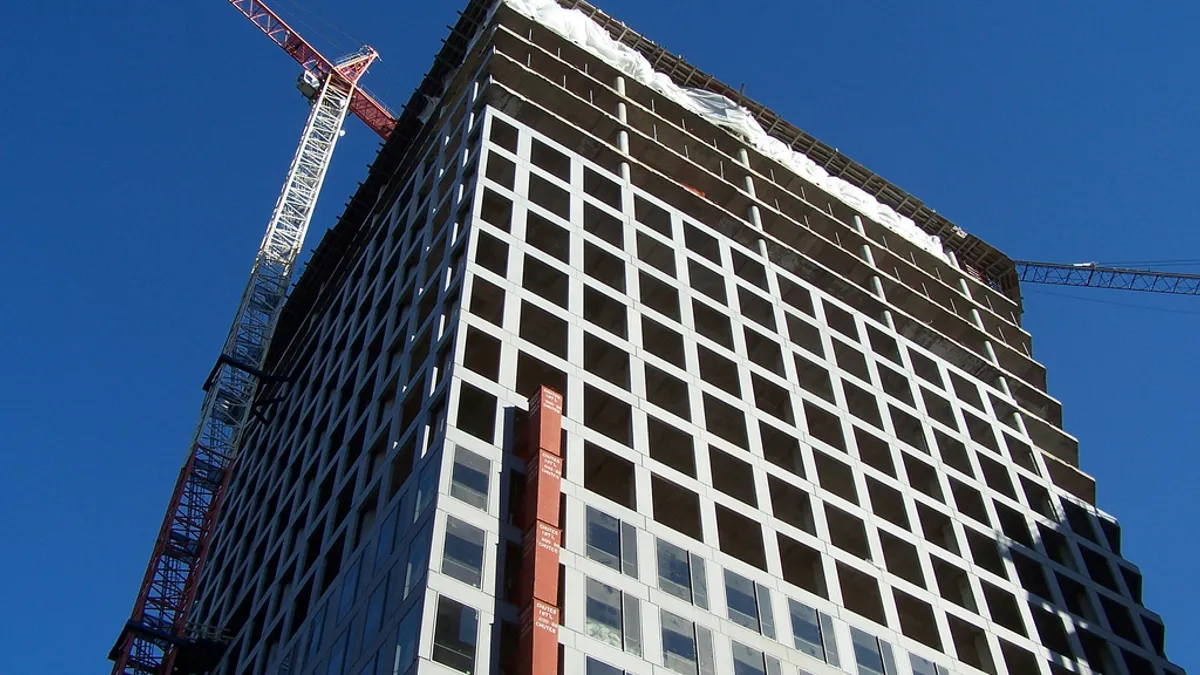Dive Brief:
- The December Dodge Momentum Index grew by 2.9% to 136.7 from a downward-revised November measure of 132.8, according to Dodge Data & Analytics.
- A 5.7% rise in the commercial sector last month offset a 1.7% slip in institutional planning.
- The Momentum Index is currently at an eight-year high after its steady 2016 climb, although it is still at least 25% lower than when it hit its apex in 2007.
Dive Insight:
The Momentum Index is a monthly measure of initial reports of nonresidential construction projects in the planning stages, which typically lead nonresidential construction spending by one year.
Commercial planning, Dodge reported, realized impressive gains in 2016, surging 38% since the beginning of last year. Institutional, however, experienced a slight contraction in 2016 after a robust 2015. Dodge said commercial will most likely continue its growth pattern this year, though at a more reserved pace. Institutional planning could turn around if the educational sector’s many bond measures begin to pay off in increased school construction.
Dodge reported that eight commercial and institutional projects — up one from November — valued at more than $100 million entered the planning stages in December. These included a $400 million mixed-use building (640,000 square feet of office space plus a hotel) in Atlanta, a $351 million office tower in San Francisco, a $140 million overhaul of Quicken Loans Arena in Cleveland and a $130 million high school in Sherman, TX.
The 2017 Dodge Construction Outlook report released back in October and its commercial start predictions for the commercial sector are mostly positive, except in the hotel category. Dodge estimated that office construction would fare the best in 2017 with a 10% projected increase in starts, adding up to 110 million square feet.
The institutional story for 2017, according to Dodge, should also be a positive one, with the amusement and recreation building category leading with a predicted increase in starts of 13%. This category includes the expensive and luxurious mixed-use sports stadiums and arenas that have become high priorities for teams and their host cities as a way to bring in tourist dollars, and — in some cases — revitalize neighborhoods.














